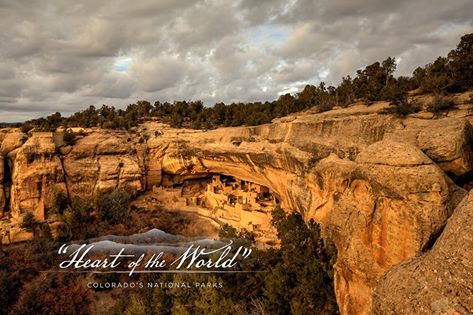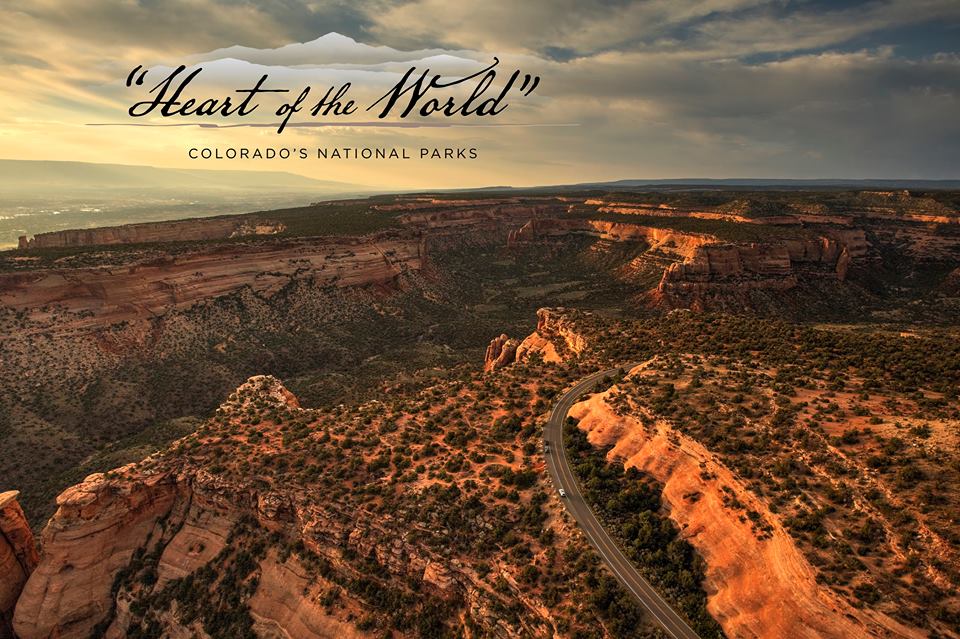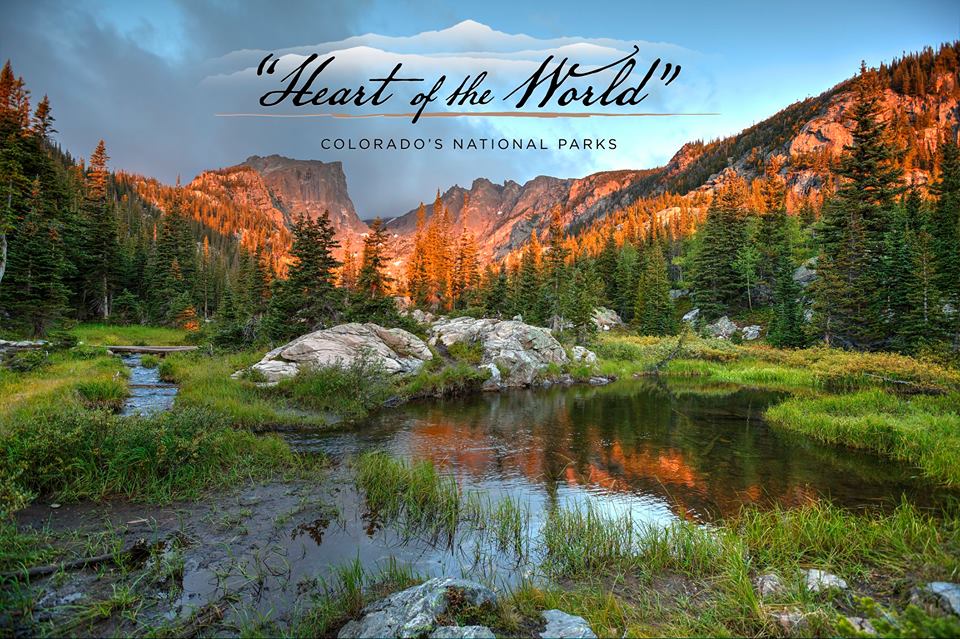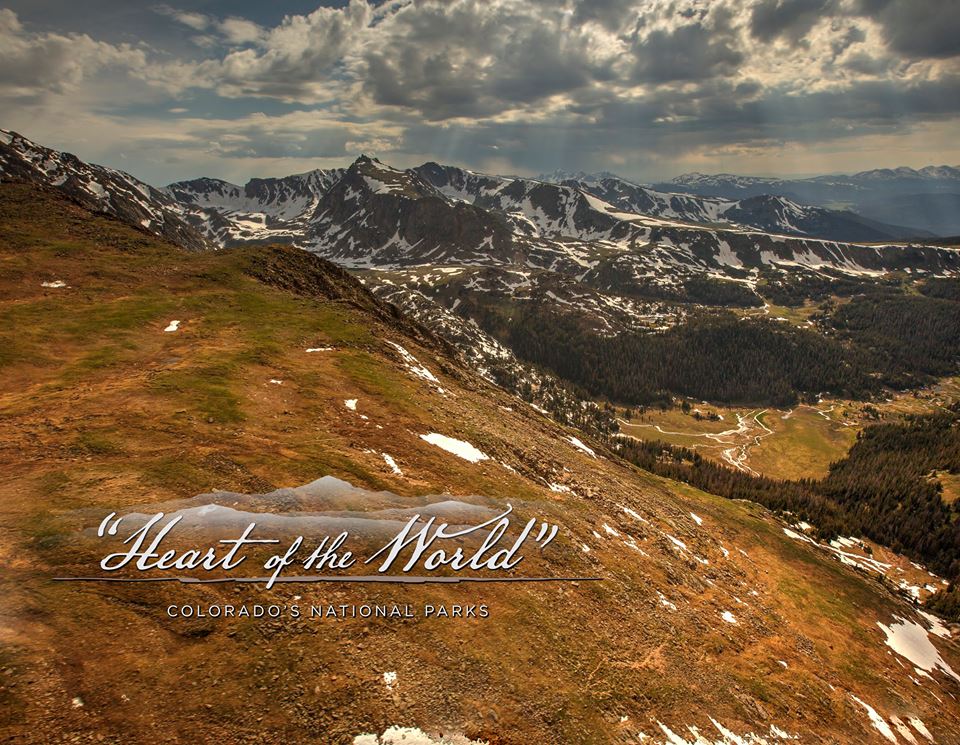Starting on May 5, 2016 and continuing through May 19th on PBS in New Mexico is a brand new documentary series exploring the wonders of the National Parks. “Heart of the World: Colorado’s National Parks” tells the stories of five of the most amazing parks on the planet, which all happen to be in Colorado. This series is timed perfectly for the NPS centennial celebration, allowing viewers to come away stunned by the beauty and concerned for the fragility of public lands and significant archaeological sites – with new knowledge of how they can become partners in preservation.
The National Park System has survived, and continued to grow, treasured by Americans as our heritage. Yet, many would be surprised to learn the Park System is under constant threat and underfunded for the needs they serve. In that vein, we are thrilled to be sharing this film with our readers and the sharing its message of awe at the Natural and Cultural beauty preserved today by NPS.
We were very excited to be able to ask award winning Director of this series Chris Wheeler, of Great Divide Pictures, some questions and share some insights about the series here.
How long did it take to produce the series? How much time was spent filming?
It took about 2 1/2 years to produce the three-hour series, “Heart of the World.”. Principal filming lasted about a year, because we wanted to capture the parks in all 4 seasons. We spent around a total of 80 days filming the 5 National Park sites.
Why did you want to make this series?
For the past 20 years, I’ve had the privilege of producing Visitor Center films for more than 25 units of the National Park Service. Colorado has been my home since 1987, so I wanted to tell the stories of the amazing National Parks in the state that I love. I also wanted to try and show views of our parks that few get to see. I began this project on the heels of working 5 years on a variety of documentaries about America’s Civil War. It was fascinating to explore this part of our nation’s history, but also very difficult on a number of levels. With “Heart of the World,” I wanted to make a film that was not about death, but life. And not about war, but peace.
Most people know about the cultural resources at Mesa Verde? What other cultural resources are at these other Colorado National Parks?
On the lands of Great Sand Dunes National Park, Stone Age people hunted mammoth and pre-historic bison. Archaeologists have identified Clovis points from the Great Sand Dunes area that were likely used by early mammoth hunters. More recently, the Great Sand Dunes is the home of more than 100 ponderosa trees that were peeled for food and medicine by the Ute and other native peoples. These ‘living artifacts’ of the Great Sand Dunes are on the National Register of Historic Places.
The popular “Ute Trail” of Rocky Mountain National Park is one of several historic east west trails used by the Ute people to traverse the rugged alpine tundra. The Utes referred to the Rockies as “The Shining Mountains.” In our film, Roland McCook of the Uncompahgre band of Utes, says: “It doesn’t take much for me to envision a line of warriors coming across these mountains with their horses and their wives, tipis . The spirit of my people are still here. In the trees. In the draws. In the drainages. That’s where they are. And I don’t believe that they’ll be anywhere else but here. This is the spirit of the Rocky Mountains.”
What role does filmmaking like yours have in Preservation? How do you think seeing films like yours helps preservation efforts?
I deeply believe in the National Park Service mission of preserving these magnificent places for future generations. Our hope with “Heart of the World” is to use the power of the medium of film to inspire and educate. Through our efforts, we want people to become vested in not just the Colorado parks,, but all National Parks. If we inspire with our films, we can teach. If we teach, we can encourage responsibility. If we teach responsibility, we can encourage visitors to become stewards who will be vigilant in protecting and preserving these treasures of Colorado. The National Parks are a gift. It is our responsibility to insure that these places are preserved for future generations – to insure that the same views we enjoy today are seen by our children, and by our children’s children.
What other projects have you worked on related to Cultural resources?
A great deal of my career has been spent telling the stories of America’s native peoples. In the early 1990s, I produced a Discovery Channel series called “How the West Was Lost.” The 13-hour series told stories of the American West through the lenses of the Cheyenne, Lakota, Nez Perce, Navajo and other native tribes. For the series, we recorded oral histories from tribal members who recounted stories of Wounded Knee, Sand Creek, Little Bighorn, Washita, and other tragic battles. We have also produced Visitor Center for several National Park sites that protect and preserve cultural sites of Native Americans, including Pipestone National Monument, a site in Minnesota that preserves sacred quarries native peoples used to gather sacred rock used to create pipes for religious ceremonies.
We also produced a film for “Casa Grande Ruins National Monument,” a park site in southern Arizona that preserves “The Great House,” and other structures built by the Ancestral Sonoran Desert People hundreds of years before the first Europeans stepped on this continent. Casa Grande Ruins tells the story of the ingenious methods the Sonoran Desert People used to become successful farmers in the harsh environs of the Gila River Valley.
Most recently, we produced the Visitor Center film for Petroglyph National Monument, outside of Albuquerque. This National Park unit preserves and protects one of the largest petroglyph sites in North America.
What is your next project?
We have just begun production on films for 4 National Park sites on the Island of Hawai’i. They are Pu‘ukoholā Heiau National Historic Site, Pu‘uhonua o Hōnaunau National Historical Park, Kaloko-Honokōhau National Historical Park, and Ala Kahakai National Historic Trail. These cultural and historic treasures preserve and protect the rich stories of Native Hawaiians, who have inhabited the islands for more than 1000 years.
Thank you so much for sharing with us and our readers!
– Dawn Kaufmann, TAC
Heart of the World: Colorado’s National Parks, join them on Facebook
“I came here last year and found these canyons, and they feel like the heart of the world to ME. I’m going to stay and build trails and promote this place, because it should be a national park.” – John Otto (1907), founder of Colorado National Monument
National Parks Profiled in “Heart of the World” Series are:
- Rocky Mountain National Park, whose plentiful wildlife and towering peaks carved by glaciers, make it one of the most visited parks in the United States.
- Mesa Verde National Park, a World Heritage Site and the storied home of the Ancestral Pueblo, native peoples who carved homes into cliff dwellings more than 500 years before the arrival of Europeans.
- Black Canyon of the Gunnison National Park, home of one of the steepest, deepest canyons on Earth.
- Great Sand Dunes National Park and Preserve, where Sahara-like dunes reach skyward over 700 feet against the backdrop of the rugged Sangre de Cristo Mountains.
- Colorado National Monument, a desert wonderland of red rock spires, canyons, and mesas.








